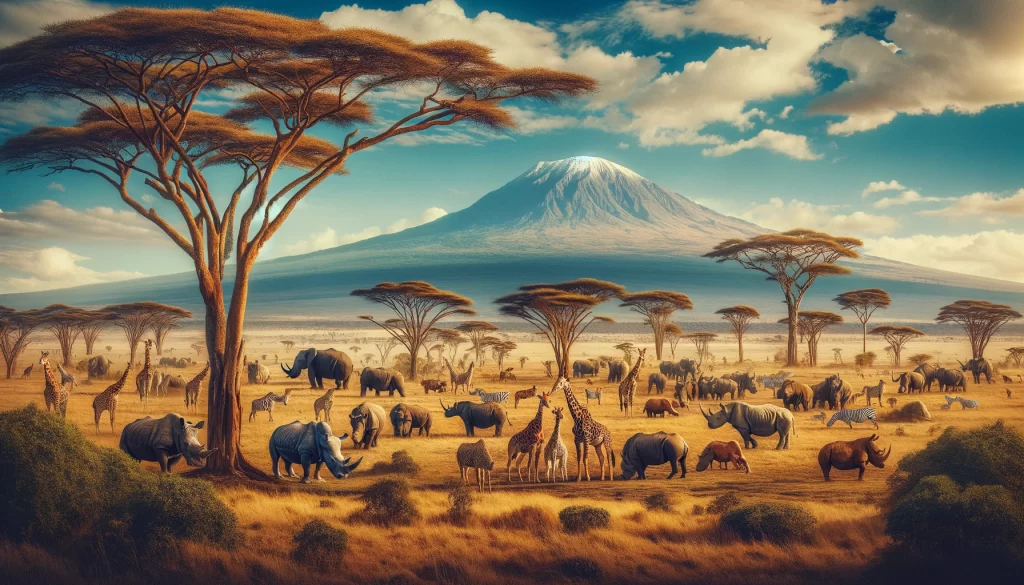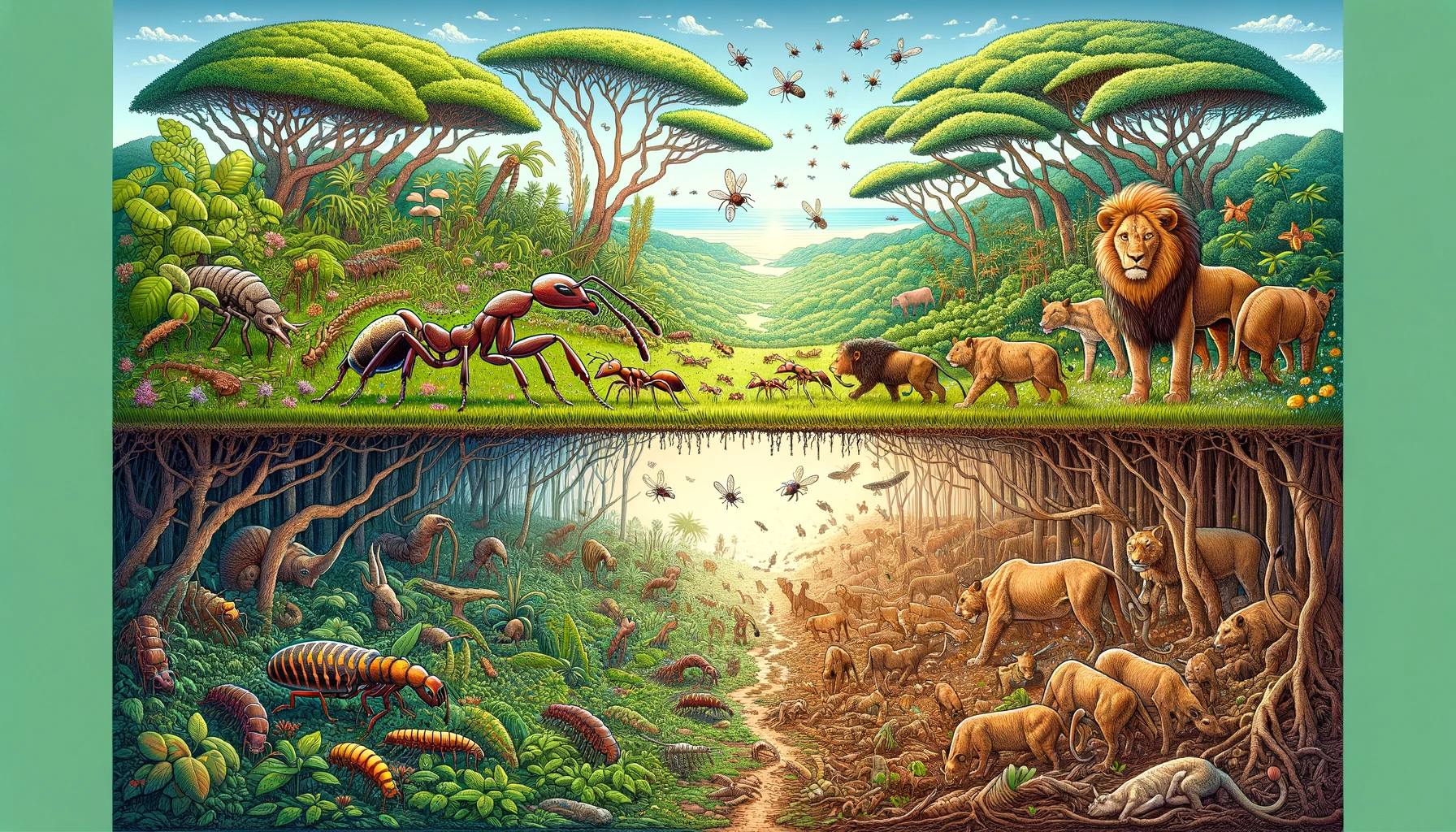Once upon a time in Kenya, Africa, a tiny ant caused a big change that affected even the mighty lion. This true story shows us the incredible ways everything in nature is connected. Let’s explore how a small insect, the big-headed ant, has reshaped the food chain and the environment in the savannas of Africa.
Around 100 years ago, an invasive species called the big-headed ant, originally from Mauritius, made its way to the Ol Pejeta Conservancy in Kenya. These ants, known for their large heads, moved into the whistling-thorn trees and displaced the native acacia ants that were living there.
Invasive species like the big-headed ant are organisms that move into areas where they don’t naturally belong, often causing harm to the local ecosystem. In this case, the big-headed ants disrupted a symbiotic relationship between the native acacia ants and the whistling-thorn trees. Normally, the acacia ants would get food and shelter from the trees, and in return, they’d fiercely protect the trees from any threats, like elephants, using their bites and formic acid. Formic acid is a powerful chemical found in many insect bites and stings, including those of ants and the stinging nettle plant, capable of deterring much larger animals.
However, with the big-headed ants in charge, the elephants began to feed more on the trees, causing significant damage. This change in the ecosystem, or the community of living organisms interacting with their physical environment, led to fewer trees. As a result, lions, which are at the top of the food chain, had to adjust their hunting strategies. Without enough trees for cover, lions found it harder to catch zebras and started targeting buffalo instead, which are slower but tougher to hunt.
This fascinating chain of events was uncovered in a study led by Douglas Kamaru from the University of Wyoming, along with researchers from around the globe. They showed how the arrival of the big-headed ant, a seemingly minor player in the ecosystem, could have a domino effect, influencing the hunting success of lions, the top predators.
Despite the challenges of hunting buffalo, the lion population at the conservancy has remained stable. This situation highlights the complexity of ecosystems—how every living thing, no matter how small, plays a crucial role. The interactions within an ecosystem, like the invasive big-headed ants altering the food chain, demonstrate the interconnectedness of life.

This story, more than just about lions and ants, teaches us about the delicate balance of ecosystems. It’s a reminder that introducing or removing just one species can lead to unexpected and widespread effects. Such research opens up new avenues for understanding the intricate web of life and the importance of every creature within it, emphasizing the beauty and complexity of the natural world.
This article is based on the following article:
https://newatlas.com/science/ant-zebras-lions-africa/

Background Information
Understanding these concepts can help the reader see the big picture of how a small change, like the introduction of an invasive ant species, can have wide-reaching effects on the ecosystem, affecting the relationships between plants, animals, and even the survival strategies of top predators like lions:
1. Invasive Species: An invasive species is a plant, animal, or other organism that is not native to a specific location and causes harm to the environment, the economy, or human health. The big-headed ant, Pheidole megacephala, mentioned in the story, is an example of an invasive species because it comes from somewhere else and creates problems in its new home in Kenya.
2. Symbiotic Relationship: This is a special kind of interaction between two different living organisms where both benefit from each other. In the story, the native acacia ants and the whistling-thorn trees have a symbiotic relationship. The ants get food and shelter from the trees, and in return, they protect the trees from animals that might harm them.
3. Ecosystem: An ecosystem is a community of living organisms, like plants and animals, and their physical environment, all interacting together. Changes in one part of the ecosystem, like the arrival of an invasive species, can affect many other parts, as seen in the story.
4. Food Chain: The food chain is a way to show who eats whom in the wild. It starts with plants and moves up to the animals that eat those plants, and then to the predators that eat those animals. The story talks about how the food chain was changed because lions started hunting different animals due to changes in their environment.
5. Conservancy: A conservancy is an area of land where wildlife is protected and preserved. The Ol Pejeta Conservancy in Kenya is a place where animals like lions, zebras, and elephants live and are protected.
6. Formic Acid: This is a chemical found in the bites and stings of many insects, including ants. It can hurt predators or larger animals that try to attack or eat the ants’ home.
Please subscribe to Insight Fortnight, our biweekly newsletter!
